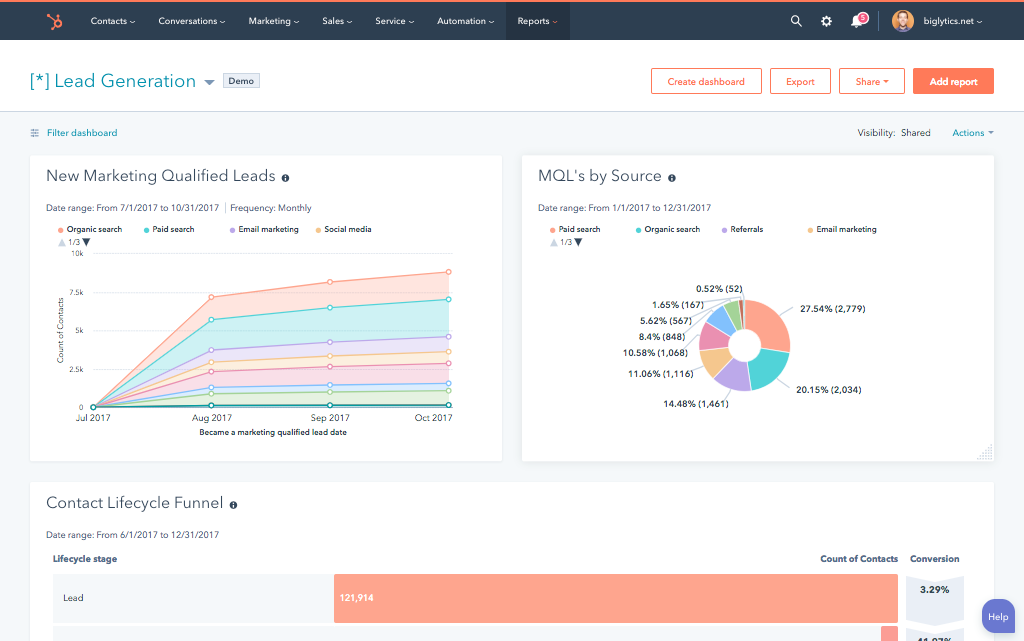Are you thinking about using HubSpot for your business? It's a great tool, but before you start using it, there are a few things you should do first. Doing so will help you avoid HubSpot implementation failure.
Before you even log in to HubSpot, you should forget about HubSpot. Seriously. Put HubSpot aside for now and focus on some pre-HubSpot work. When working with clients who are new to HubSpot I refer to this effort as “Phase 0.” A big part of Phase 0 is to establish a solid understanding of their organization and how they operate regardless of the technology in their stack. So, let’s grab a dry erase marker, a white board and create a visual of how everything happens or doesn’t happen.
Start by Documenting How Marketing Operates
Begin by documenting your marketing processes first. This can be a challenge as you may have a wide variety of tactics being used. You likely have a mix of inbound, outbound, paid placement, and a dozen channels. The trick is to keep it simple and not overthink it. As a guide, you can think of a prospect’s journey as they advance from first conversion to consideration to making a purchase decision. Document each step in the journey. Then, overlay your marketing activities. Highlight the key transition points that indicate a potential need to assign a task, hand off to another department, or reclassify the prospect’s qualification status, lead score or anything else that would trigger a change in how you interact with them. Doing so will be invaluable later when you configure HubSpot to mimic your marketing operations.

You can verify the documentation by asking yourself some questions, such as:
- What does marketing do when a prospect does X?
- How does marketing complete X task?
- How does marketing communicate with other departments about X?
- Does marketing enhance or append to the contact and company data?
- Which activities are completed manually, and which are repeatable, structured and appropriate for automation?
Continue with Outlining Your Sales Development Processes
Not all organizations have a dedicated team assigned specifically to sales development. That’s OK. Regardless, your prospects will need some assistance and encouragement to advance down your sales pipeline. Also, you’ll have a greater chance for sales success if you have processes in place to further qualify prospects before they are taken through your processes and handed off to sales.
Typically, the toughest reality to accept is the fact that not all of your prospects are a good fit for your organization. So, it’s critical that you limit your time, effort, and focus to concentrate only on those prospects who are most likely to buy. And that’s exactly what sales development is all about. To do this, be sure to define your lead qualification parameters. If you’re note sure where to begin, don’t worry. Start with listing what you know about companies who fit into your Ideal Customer Profile (ICP). Common data points to use are things like industry, annual revenue, company size, or number of locations. Those who fit into your ICP will get attention. Document what you do and how you do it. Also, decide what you do with those who don’t qualify.
Some sales development process questions to consider:
- At what point in the prospect’s journey does sales development get involved?
- Does your process include cold calling? How about email outreach?
- What repetitive, daily activities can be automated?
- What are the steps taken to move them from MQL to SQL?
- Is there a checklist of requirements for when and how a prospect is handed off to sales?
Show and Tell Your Sales Processes
As many sales professionals would tell you, nothing happens until sales sell something. That’s true. What’s also true is that studies show a higher success rate when teams follow a structured sales process. Yep, talent and hard work alone are not enough. Despite objections, it’s imperative to establish a structured, systematic method for all your salespeople to follow. Without a structured approach, it won’t be possible to leverage the power of HubSpot to help you close more sales.
Questions to help you clarify your sales processes include:
- Do you know how many leads are generated, then qualified, then provided to sales? Of those, what is the close rate?
- Does the sales team record and review activities to identify what is effective?
- Is there visibility into the number of scheduled discovery calls, meetings, demos, or other measurable points in the sales process?
- How accurate are sales reps with their probability to close estimates?
- Can you pinpoint when prospects fall out of the pipeline?
Don’t Forget About Reporting to Leadership

Along with documenting how your organization operates within marketing, sales development, and sales, you have to remember that senior leaders need to be kept informed so they can make appropriate decisions. Again, this is something to be documented and well understood prior to logging into HubSpot and building any reports or dashboards. Why? In the end, senior leaders may only look at end results. And, they want to have the ability to see trends, know what can be expected, and get more depth and detail when requested. So, as Dr. Stephen Covey said, “begin with the end in mind.”
Some high-level questions to ask the higher-ups:
- What do they want to know?
- How often will they review it?
- Does the data need to be included in other reports?
HubSpot Implementation - In Summary
Having these processes defined is important for many reasons. First, it helps everyone on the team know what they should be doing and how they should be doing it. Second, having defined processes also helps everyone work together more efficiently. Finally, having defined processes in place before you start using HubSpot can help you get the most out of the tool.
If you have decided to use HubSpot, and would like some help in setting it up, please reach out to our HubSpot Team. We’ll have our sales and marketing experts walk you through how we help our clients with the important pre-HubSpot work.





















